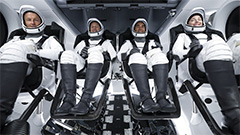
If you are deaf, hard of hearing, or have a speech disability, please dial 7-1-1 to access telecommunications relay services.
Human space flight is changing. What once was an exclusive government-led activity is now open to commercial space operators and private individuals.

The FAA's safety oversight responsibilities are designed to protect the safety of the public on the ground and others using the National Airspace System. Congress has both given and restricted the FAA's authority.
The FAA issues commercial space licenses, verifies launch or reentry vehicles meant to carry humans operate as intended and provides regulation of flight crew qualifications and training. The FAA also performs safety inspections and safely integrates commercial space operations into the National Airspace System.
However, Congress has limited the FAA's authority in specific ways. Under federal law, the FAA is prohibited from regulating the safety of individuals on board. This legislative "moratorium", originally established in 2004, and extended multiple times by Congress, will now expire January 1, 2025.
In April 2023, the FAA established an Aerospace Rulemaking Committee (SpARC) to collaborate with industry on the development and cost of possible future regulations for commercial human space flight occupant safety. This safety focused SpARC is expected to submit a recommendation report in the summer of 2024.
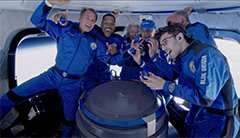
Congress, with few exceptions, limits the FAA's regulatory oversight of the health and safety of commercial human space flight occupants.
FAA safety regulations include requirements for flight crew qualifications and training so that the operation of the vehicle will not harm the public. This includes training for normal, emergency and abort situations and demonstrating the ability to withstand the stresses of space flight. In addition, pilots, remote operators and crew with a safety-critical role must meet all relevant FAA certifications.
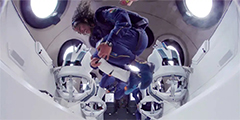
FAA regulations include requiring commercial space operators to provide life support, smoke detection and fire suppression systems on the launch or reentry vehicle. Operators are also required to take the precautions necessary to account for human factors that can affect a crew's ability to perform safety-critical roles in such things as design of the vehicle and mission planning.
The FAA also recommends human space flight safety best practices and procedures, and reports to Congress on the industry developing voluntary standards.
Federal law requires an informed consent framework so flight crew and space flight participants are fully aware of the risks and hazards involved in human space flight launch and reentry operations.
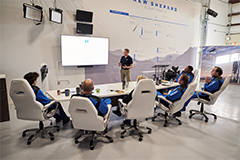
Commercial space operators are required to notify flight crew and space flight participants in writing that the U.S. government has not certified the launch or reentry vehicle as safe for carrying humans. The operator also must provide:
Operators must also present technical information in a manner that can be readily understood and maintain records of signed informed consent forms. The FAA verifies the informed consent requirements are met prior to launch.
The FAA does not certify launch or reentry vehicles as safe for carrying humans. Further, the FAA requires launch service providers to inform crew and space flight participants prior to flight that the agency has not certified the vehicle as safe.
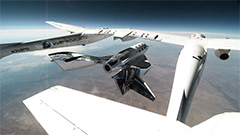
For a commercial space operator to gain FAA license approval for its vehicle to carry humans, it must demonstrate its vehicle performs as intended during a real operational test flight. No space flight participant is allowed onboard during flight until the FAA verifies this safety regulation is met.
The specific verification process may vary based on such things as the type of vehicle (i.e., piloted/unpiloted), how it is launched (i.e., vertical/horizontal) and its mission (i.e., suborbital/orbital).
The FAA expects the commercial human space flight industry to continue to grow and the number of people launching to space to increase dramatically. To recognize these modern day adventurers, any flight crew or space flight participant who is on an FAA-licensed launch or reentry vehicle and reaches 50 statute miles above the surface of the Earth will have their name listed on the FAA Commercial Human Space Flight Recognition web page. The FAA no longer designates anyone as an ‘astronaut.’ In addition, the FAA does not define where space begins.
Under the NASA Commercial Crew Program, NASA contracts with commercial space operators to provide transportation services to carry government astronauts to and from the International Space Station. The FAA partners with NASA during these missions and is responsible for public safety through its commercial space licensing process while NASA is responsible for crew safety.
| Crew | Any employee or independent contractor of a licensee who performs activities directly relating to the launch or reentry of a commercial human space flight mission whether onboard the vehicle or on the ground. |
| Flight crew | Crew that is on board a vehicle during a launch or reentry. |
| Government astronaut | An individual designated by NASA who is on a launch or reentry vehicle and is either an employee of the U.S. Government or an international partner astronaut. |
| Orbital Flight | When a spacecraft is placed on a trajectory with sufficient velocity to place it into orbit around the Earth. |
| Pilot | A flight crew member who has the ability to control, in real time, a launch or reentry vehicle's flight path. |
| Space Flight participant | An individual, who is not crew, carried aboard a launch vehicle or reentry vehicle. |
| Suborbital Flight | When a spacecraft reaches space, but its velocity is such that it cannot achieve orbit. |